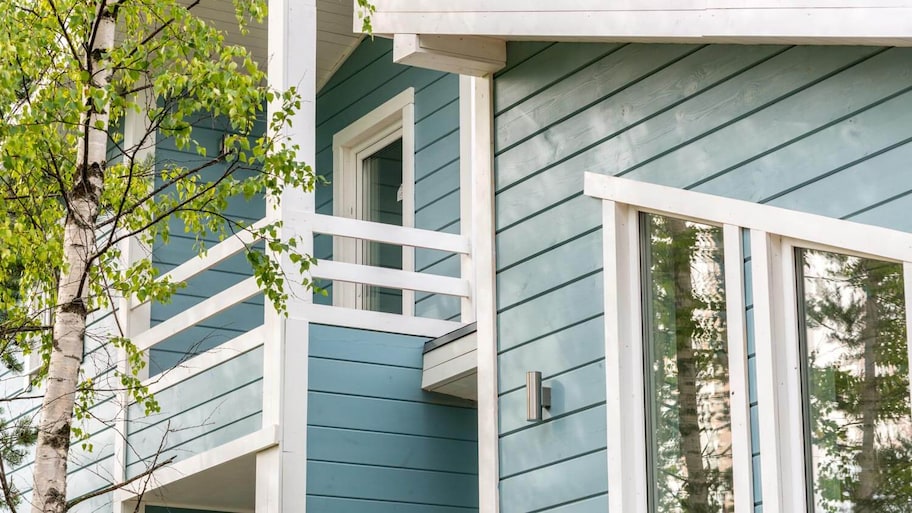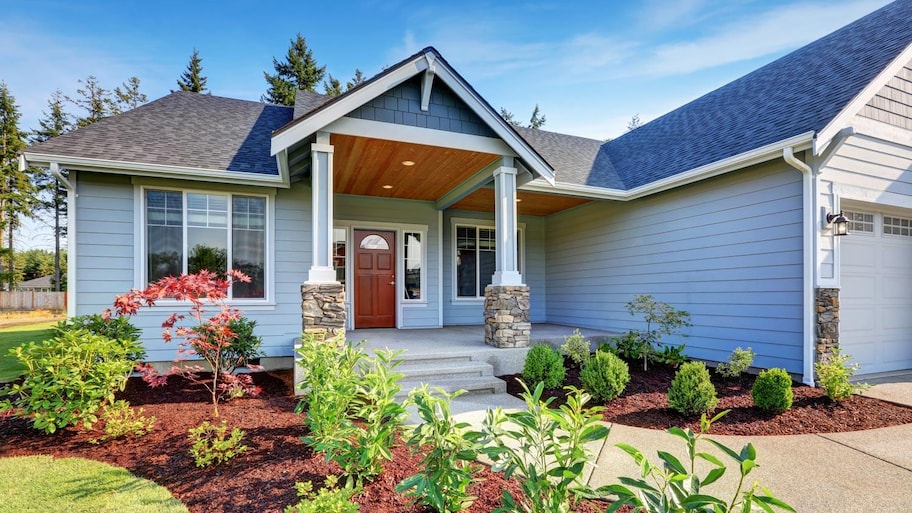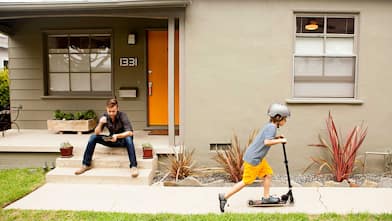Highlights
The most common and inexpensive house siding option is vinyl.
Until the 1990s, natural wood was the most popular siding option.
Stucco is the primary choice for western homes and often increases resale value.
Stone veneer and synthetic wood are lighter-weight options that give your home a natural look.
As homeowners, we love talking about curb appeal, and if there's one thing that'll add some pop from the sidewalk or street corner to your home, it's new house siding. But house siding does more than look good—it protects your home from the elements. With several siding materials to choose from, it’s important to narrow down which works best for your house.
Read on to learn about the eight best house siding options for your home.
1. Vinyl Siding
Long lasting color, durability, and low maintenance are just some of the reasons many homeowners, if not the majority, gravitate towards installing vinyl siding on their homes.
Another reason it's so commonly used is that vinyl is a great option for any climate. It's naturally insulated, so whether you're working to keep heat in during a cold northern winter or running the air conditioner in the high desert all summer, it'll help keep your home where you want it temperature-wise.
Vinyl lasts about 15 years, which is slightly less than others you'll find on this list. Adding vinyl siding to a whole house costs between $6,200 and $16,000 on average, or $3 to $12 per square foot. That may seem high, but it's definitely more cost-effective than other options.
Ask a local siding contractor for a quote to get your project started.
2. Metal Siding

Metal siding is usually steel siding or aluminum. In terms of durability, you can’t beat steel siding. Steel costs much more on average than aluminum, but holds up to wear and tear much better. Over time, aluminum can be prone to dents from natural weather events like hail. Metal siding is naturally fire-resistant and rot-resistant as well.
A contractor who specializes in metal siding can give you more information.
3. Smart Siding
LP Smart Siding became popular in recent years. It's marked by a textured engineered wood finish but uses performance-treated wood to help it outlive more natural materials. It's also much lighter and easier to install, which drove many home contractors to start using it.
Smart siding can be especially cost-saving for homes with lots of edges or odd trim, where many cuts of siding may need to be measured and installed. The product comes with a 50-year warranty.
4. Stone Veneer Siding

Stone is a material as old as time, which is why many homeowners who can afford it love to use it in, on, and around their homes. Most manufacturers offer a warranty of at least 25 years, though some go all the way to 75 years. Exterior stone veneer costs up to $95 per square foot, though, so it's definitely on the higher end of the price range.
5. Stucco Siding
Stucco is made from Portland cement, lime, sand, and water. It stays cool in hot weather, is both fire and rot-resistant, and from an aesthetic value standpoint, can absolutely increase value for your home. Many home buyers love the look of stucco and will pay extra for a home that has it.
In fact, more than half the homes in the western section of the U.S. have stucco siding, according to Remodelingcosts.org.
Stucco materials cost about $5.50 per square foot on average, although you may pay as much as $12 per square foot. Installing stucco siding costs up to $19,000.
6. Composite Siding

Richer colors that create an authentic look are one of the main draws for homeowners who install composite siding. Its R-value, or resistance value, which measures how well insulation handles energy loss, is one of the highest of any on this list. This means composite siding is an excellent home insulator.
Composite siding is rated to last about 30 years by most manufacturers.
7. Natural Wood Siding
For those opting to go with natural materials, various wood sidings offer great eco-friendly benefits. Believe it or not, until the 1990s, it was the primary choice for siding on new homes, with nearly 50% of new homes using wood. Now, it's much lower on the list.
Wood siding costs between $2 and $6 per square foot. To make a natural wood siding investment last, you need to clean it annually. That goes for any house siding option you choose, but wood will deteriorate, grow mold, and/or rot if it's not maintained.
Wood is recyclable, making it an eco-friendly material to install on your home.
8. Synthetic Wood Siding

Also called "pressed" wood siding or faux wood siding, these synthetic materials are highly rated against tough weather and meant to last 15 to 30 years. It's also rot and mold resistant, which eliminates a huge downside of installing natural timber on your home.
Synthetic wood offers the natural appearance of lumber with less upkeep, lighter weight, and possibly even a smaller price tag. It's perfect for that rustic look you're going for.




